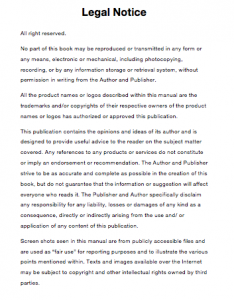
Chapter 4 Vol 4
Stages Of Change
Finally, let’s talk about the 5 important stages to induce change. Each of these stages describes an individual’s attitude toward behavior change. Trying to change behavior before one is ready usually results in failure to develop new healthy behaviors. Small steps are the best bet for long-term results.
Pre-contemplation
The stage at which individuals have no intention to change behavior. They are not thinking about changing their behavior. Many individuals in this state are unaware or under aware of their problems. These individuals are not ready for change.
Strategy: Assess knowledge, attitudes, and beliefs and provide information to build on existing knowledge.
Contemplation
The stage in which individuals are aware that a problem exists. In this stage, individuals are willing to consider about overcoming it, but are still sitting on the fence. In other word, individuals at this stage have not yet made a commitment to change and to take any action. Individuals are contemplating whether it’s something that will be worth it. Making the leap from thinking about change to taking action can be hard. Asking yourself about the pros (benefits) and cons (things that get in the way) of changing your habits may be helpful.
Strategy: Discuss motivation and barriers to change and possible solutions.
Preparation
If you are in the preparation stage, you are about to take action. To get started, look at your list of pros and cons. How can you make a plan and move to action?
Strategy: Assist in developing an action plan for change, provide direction and encouragement.
Action
This is probably the most crucial stage, as without taking massive action – NOTHING HAPPENS. One requires to have tremendous dedication in the form of time and energy to break through this stage. This is where you break and shape your new belief, thoughts, and habits.
To stick with your habits, it is helpful to look at how you are doing, overcome your setbacks, and reward yourself for your hard work. Track your progress through a healthy eating journal. This can help you identify your strengths; spot areas where you can improve, and stay on course.
Strategy: Reinforce decisions for change; offer continued support and reinforcement for positive changes.
Maintenance
In this stage, healthy eating or physical activity has already become part of your routine. So what should you do in this stage? All you have to do is to avoid slip-ups, keep things as interesting as possible and find ways to stick to your habit.
Strategy: Add variety and stay motivated. Mix up your routine with new activities, physical activity buddies, recipes, rewards and food.
Food pyramid is just a guideline for our eating habit. If you want to achieve a healthy lifestyle, eating guideline is definitely not enough. A healthy lifestyle comes with balanced diet, exercises and a healthy mind. Remember, healthy does not only apply to our body but our mind as well.

